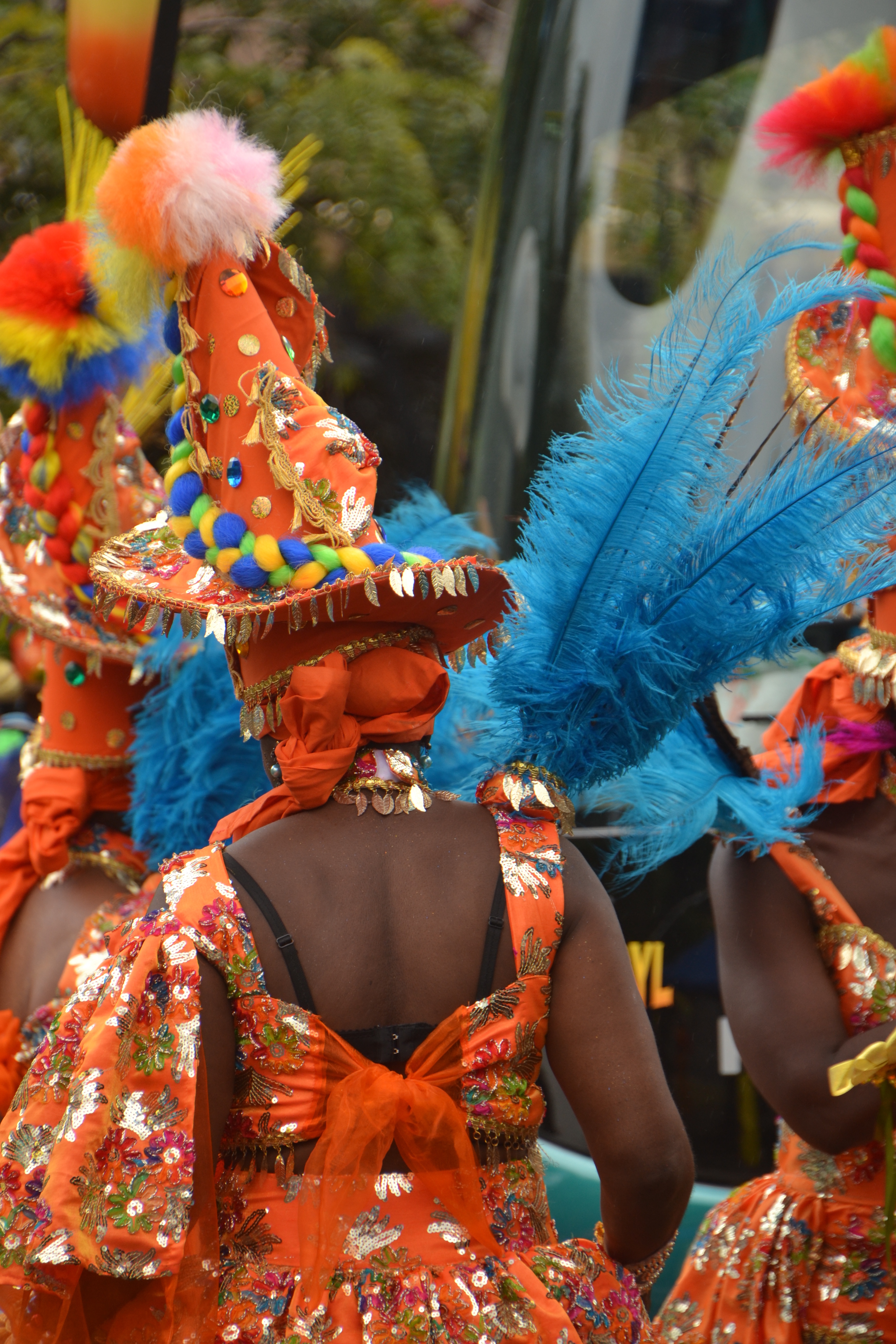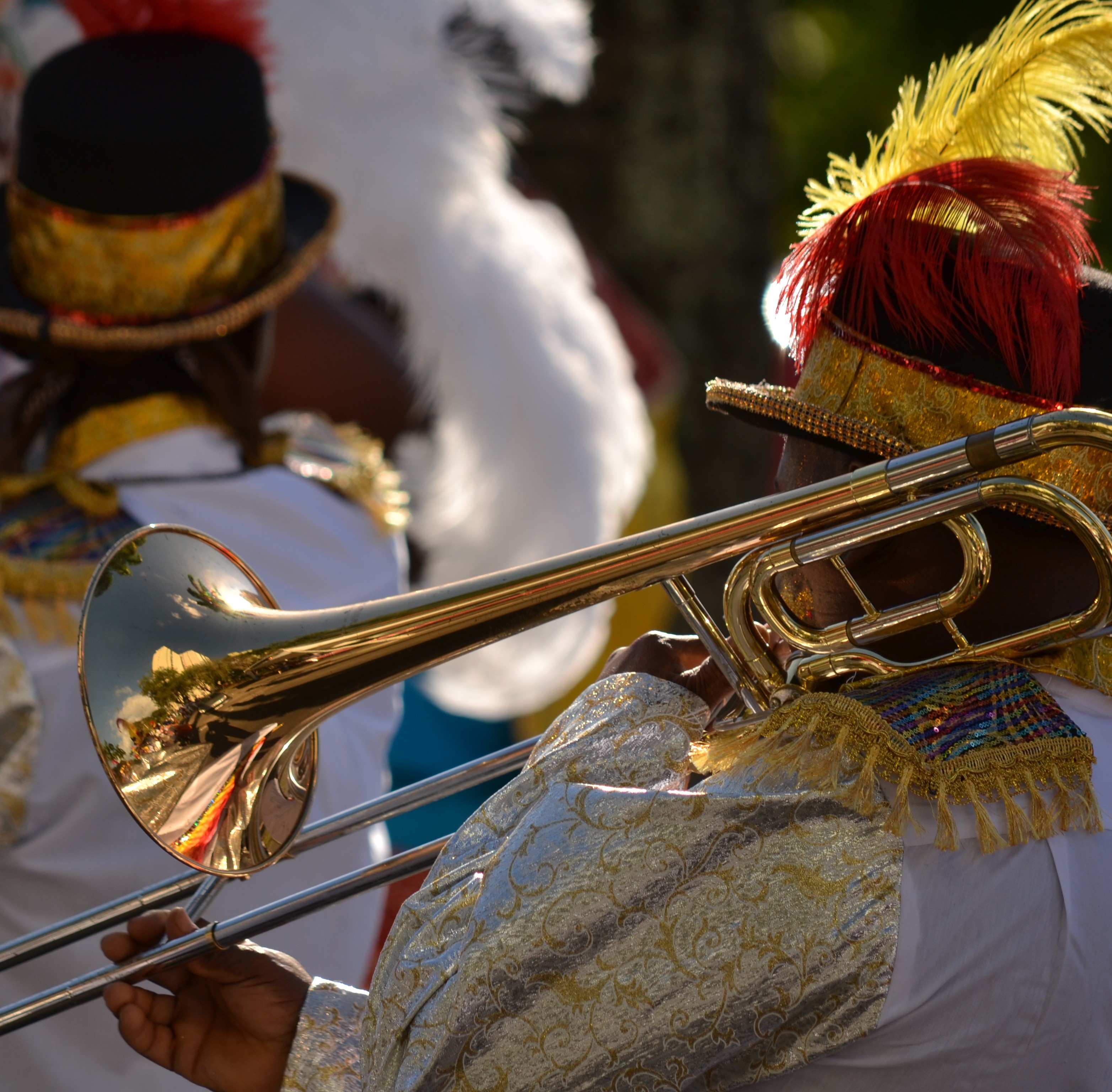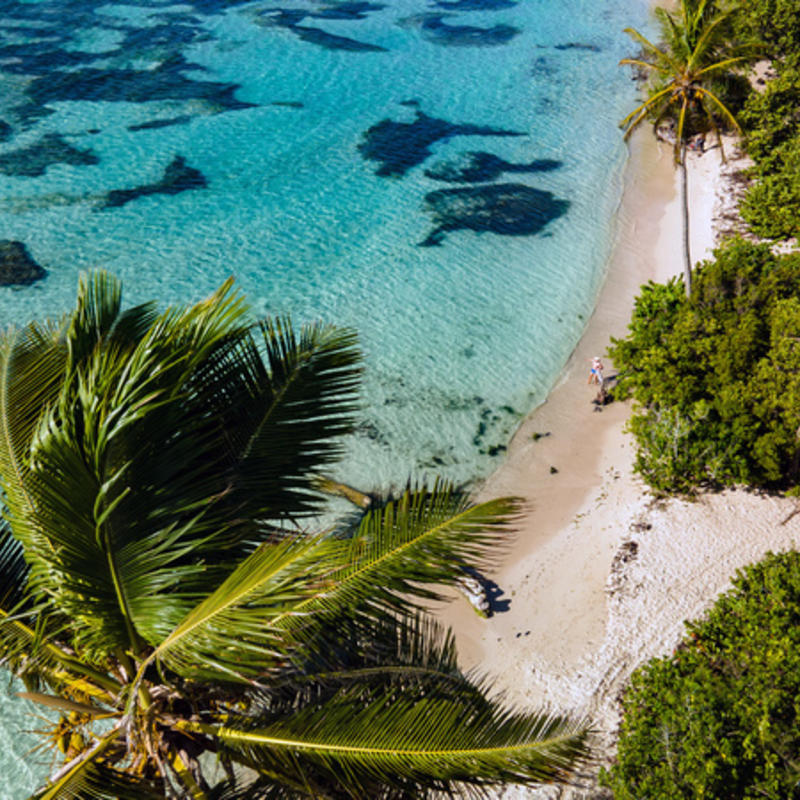Évènement incontournable des îles de la Martinique et de la Guadeloupe, le carnaval antillais est une institution. Fête historique, culturelle et colorée, c’est plus que jamais l’occasion de sortir des placards vos paillettes, vos plumes et vos tutus pour faire la fête sans retenue ! Tous les ans, le carnaval antillais débute le premier dimanche de janvier et se termine à la mi-février, lorsque le roi Vaval est brûlé sur la place publique.
En Guadeloupe, les festivités se tiennent tous les dimanches jusqu’aux jours gras et, en Martinique, les parades et les défilés emplissent les rues durant tout le mois de janvier.
What is the West Indian carnival?
The carnival is a very popular and important celebration in Guadeloupe and Martinique: it is a tradition that goes back more than four centuries! The two islands have different customs and carnival styles, but both are colorful and festive symbols.
The carnival of Martinique has been recognized as one of the most beautiful in the world, blending European and African cultures. The festivities start around January 6 and continue until Ash Wednesday, the day after Mardi Gras.
The carnival of Guadeloupe is also very popular, with colorful costume parades, music and dance. As for the dates, the festivities also begin after Epiphany and continue until Mardi Gras. To experience the unique atmosphere of the West Indian carnivals in Guadeloupe or Martinique, book your flight with Corsair right after New Year’s Eve!

The history of the West Indian carnival
The birth of the carnival
The Caribbean carnival appeared in Guadeloupe and Martinique when the colonists arrived on the islands, around the 17th century. This pagan tradition, coming from Europe, was originally created to entertain Catholics but also to allow them to feast before the 40 days of Lenten restrictions. It is also linked to the cycles of the seasons, where people disguise and mask themselves to ward off bad luck and free themselves from misfortunes.
At the beginning of the period of slavery in the islands, slaves were not allowed to take part in these carnival festivities. They could only watch from afar and envy the colonists, who entertained themselves during masked receptions held in the estates. Alcohol and food flowed in abundance, while their servants observed them with longing.

Carnival over the years
Over the years, the slaves decided to imitate their masters by hosting each other in their quarters and incorporating their own cultures (masks, songs, dances, etc.), their beliefs and their musical instruments. This moment of freedom was, of course, allowed by the masters, who accepted that their slaves organize festivities, but only within the property. Until the abolition of slavery, it was forbidden for them to parade outside their masters’ estates.
While for the colonists carnival was a way to best prepare for Lent, for the slaves it was an opportunity to reclaim their customs freely.
Throughout the 18th century, carnival underwent a series of bans and cancellations, and it was only after the abolition of slavery that it was fully recognized. Former slaves finally had the freedom to parade in the streets and even sang sarcastic songs about those who had once ruled them.
In 1898, the decision was made to establish public holidays for the carnival days! Three days were considered the carnival of the rich: Dimanche Gras, Lundi Gras and Mardi Gras. These were known for offering a truly joyful and colorful spectacle, totally different from the popular outbursts.
Today, carnival remains a showcase of cultural blends between European, African and West Indian traditions.

The differences between the Guadeloupe and Martinique carnivals
While the two islands share many similarities, their respective carnivals differ in certain aspects!
The Martinique carnival
In Martinique, the festive spirit is truly highlighted: costumes, masks, glitter and wigs are all part of the celebration. Each day has its theme: on Samedi Gras the carnival queens appear, King Vaval arrives on Dimanche Gras, and the red devil on Mardi Gras.
In general, the carnival days in Martinique are extremely festive! The unique atmosphere and the free-spirited mood are a true tradition and attract many visitors each year.
The King Vaval of Martinique represents a different character every year, usually a public figure who has recently made the news. It is traditionally used to highlight a specific cause. His identity is kept secret until his appearance on Dimanche Gras.

The Guadeloupe carnival
Unlike the Martinique carnival, the Guadeloupe one is more about different parades, which people come to admire for a visual delight renewed every year! Organized as competitions, the groups parade every day on a different theme, with 3D decorations, choreographies, songs and costumes adapted to each theme.
King Vaval is also present during the Guadeloupe carnival but, unlike the character chosen every year in Martinique, here he is not personified and does not change from one year to the next. Nevertheless, he remains the king of the carnival!

The main characters of the West Indian carnival
During the carnival, you will undoubtedly come across emblematic figures inspired by Africa, Europe and slavery.
Neg Marron or Neg Gwo Siwo
These are men and women with their entire bodies covered in a mixture called “molasses” (cane syrup and soot). They embody the former runaway slaves who found refuge in the forests to escape their masters and who freed those held in the plantations.
Marian’ Lapofig
A true heritage of ancestral Africa, this traditional Martinican character is covered with dried banana leaves. He spins to the rhythm of the tibwa, which makes his foliage sing.
Caroline Zié Loli
The character of Caroline, a Martinican emblem, is said to have been born from the true story of a young woman who was not blessed by the gods, but who nevertheless managed to get married. Her husband, an alcoholic, never remembered the way home, so she had to fetch him in the countryside and carry him on her back to bring him back.

The conch blowers
These men are known for their role: blowing into a lambi conch shell. In the past, they used to blow into it to announce deaths in the village or a natural disaster.
The malpwops
The malpwops are characters dressed in women’s underwear or very sexy outfits. Originally, they only appeared during the Lundi Gras parades (the burlesque weddings), but in recent years they have been present throughout the carnival. Some of them even carry placards or photos with very suggestive messages.
The Roi Vaval
The King Vaval (Creole diminutive of “carnival”) is an important figure in the annual carnivals of Guadeloupe, Martinique and French Guiana, where he is considered the king of the carnival. He represents all the bad things that happened during the past year and is burned on Ash Wednesday, in order to start a new year under the best auspices!

The key stages of the West Indian carnival
Although the carnival lasts for more than a month each year, there are specific and very important days that must not be missed! Called the “jours gras”, these are the last four days of the carnival. Each represents a special celebration, which must absolutely be respected in order not to pale in comparison with the other participants!
- Dimanche Gras: this is the multicolored celebration! Roi Vaval takes to the streets and parades with the other groups. Themed floats and street bands march along a specific route. Large crowds gather behind the groups and sing in unison the traditional songs and the new creations of the carnival;
- Lundi Gras: it represents the festival of inversion. Also called the burlesque wedding, it gives men the chance to dress as women and women to dress as men, in order to invert their roles;
- Mardi Gras: red is the color of the day! Make way for the little devils and demons who parade through all the streets;
- Ash Wednesday: this day marks the end of the carnival. The “diablesses” appear in the streets and the different groups are dressed in black or white. In the early evening, His Majesty Vaval is burned, but will be reborn from his ashes the following year.
- To experience the carnival at the heart of the celebration, fly to the West Indies with Corsair!



